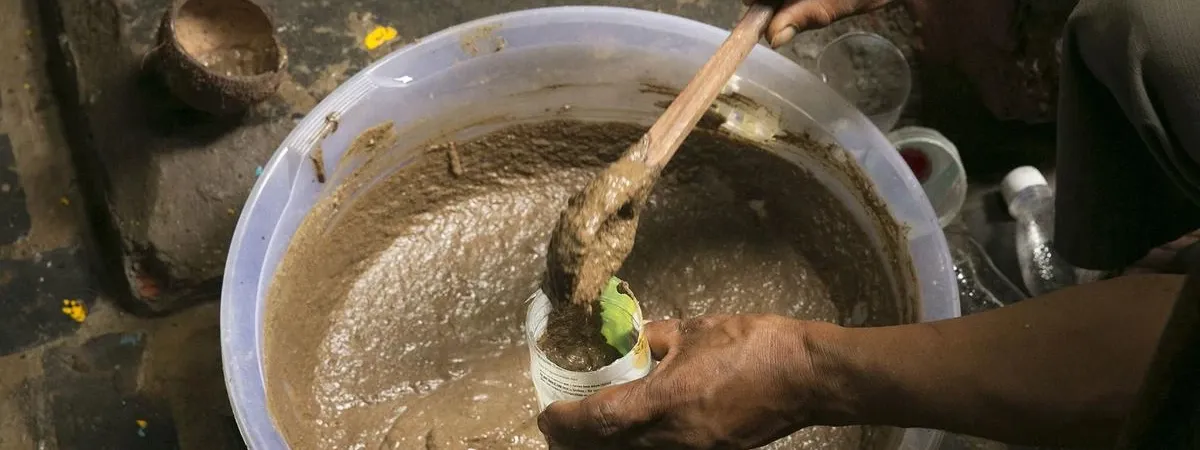How Is Panchgavya Made? Step-by-Step Process FAQs

Buy Minimum of Rs. 499 to Get Free Shipping on Cash on Delivery

Panchgavya is a traditional blend that holds a special place in Indian culture and agriculture. Known as a vital organic solution, this blend's roots lie deep in traditional Indian practices. Its unique composition offers numerous panchgavya benefits in agriculture, health, and spirituality. Understanding the panchgavya preparation process can help you tap into its versatile applications, whether you are looking to boost the natural fertility of your soil or enhance your wellness regimen. In this guide, we break down each step of the process and answer some frequently asked questions, making it easy to embrace a tradition that nurtures both nature and well-being.
Panchgavya is a revered concoction derived from the five natural products of the cow, and its name comes from the Sanskrit words meaning "five products of the cow." These five components include cow dung, cow urine, milk, curd, and ghee. Each ingredient plays a unique role in creating a mixture that supports a range of benefits. In agriculture, for instance, panchgavya acts as an organic fertilizer that not only nurtures soil health but also wards off pests naturally. In the realm of traditional medicine, it is valued for its potential to strengthen immunity and promote overall wellness. Its use in spiritual practices underscores a holistic approach to life, where every aspect of health and environment is interconnected. Embracing panchgavya means tapping into a rich heritage that values sustainability, natural growth, and the balanced interplay of nature's gifts.
The first stage of the panchgavya preparation process involves gathering the five key ingredients: cow dung, cow urine, milk, curd, and ghee. It is vital that these ingredients are sourced from healthy, indigenous cows to maintain the authenticity and effectiveness of the concoction. When collecting these elements, ensure that they are fresh and have not been contaminated. This initial care in sourcing sets the foundation for high-quality panchgavya, resulting in a more beneficial end product.
After collecting the ingredients, the next step is to create a base by mixing cow dung and cow urine. These two components are combined in specific proportions, ensuring an optimal blend that kickstarts the fermentation process. Maintaining hygiene during this mixing is essential. A clean, sterilized container will prevent any unwanted bacteria from interfering with the panchgavya preparation process. The consistency of this base is critical as it influences the quality of the final product and its multiple panchgavya benefits.
Once the base has been thoroughly mixed, it is time to introduce the liquid components: milk, curd, and ghee. These ingredients are added gradually to the mixture. The stirring technique is gentle, ensuring that the liquids blend well without disturbing the integrity of the base. This step is crucial as it balances the mixture and encourages the right conditions for fermentation. Careful observation during this phase, such as timing for stirring and ensuring full integration, will enhance the overall efficacy and natural benefits of panchgavya.
The final and transformative stage in this guide is the fermentation of the blend. The mixture is left to ferment for 7–10 days. During fermentation, regular stirring helps to evenly distribute the natural enzymes, transforming the initial mixture into a potent organic solution. Factors such as ambient temperature and the frequency of stirring have a direct impact on the fermentation quality. A controlled environment ensures that the mixture develops its full spectrum of benefits. The fermentation process not only enhances the nutrient content but also amplifies the overall effectiveness in traditional and organic applications.
Panchgavya offers a wide range of advantages that extend into several domains. It plays a significant role in sustainable agriculture and natural health practices, making it a unique addition to your wellness and gardening routines.
Agriculture: Acts as a natural fertilizer, improving soil fertility and boosting crop yield. It also functions as an organic pesticide, reducing the need for chemical interventions.
Health: Contains natural probiotics that support gut health and strengthen the immune system, aligning with many traditional medicine practices.
Environment: Encourages eco-friendly farming by reducing the dependency on synthetic fertilizers and pesticides. It promotes sustainable practices that benefit both nature and human life.
Using panchgavya not only supports organic farming but also enhances personal well-being. Its rich composition of natural ingredients makes it a holistic health solution. Whether you are looking to improve your garden, promote soil health, or incorporate natural remedies into your lifestyle, panchgavya offers timeless benefits that honor both tradition and nature.
Q1: How long does it take to prepare panchgavya?
A: Typically, the fermentation process takes 7–10 days. Patience during this period is crucial to ensure the highest quality of the final product.
Q2: Can I use panchgavya for home gardening?
A: Yes, it is an excellent organic fertilizer to naturally improve the health of your garden plants and boost soil fertility.
Q3: What are the precautions when making panchgavya?
A: Ensure cleanliness at all steps, maintain the correct ratios of the ingredients, and allow sufficient fermentation time to achieve the best results.
Q4: Does panchgavya have any side effects?
A: When prepared and used correctly, panchgavya is safe. However, if fermentation is not carried out properly, its efficacy may be compromised.
Panchgavya is a remarkable natural solution rooted in tradition and time-tested practices. Its preparation process not only highlights the importance of each natural ingredient but also showcases the myriad benefits it offers—from enhancing soil fertility to promoting holistic health. The method outlined here provides a reliable guide for anyone interested in embracing sustainable, organic approaches in daily life. By simulating this age-old technique, you can contribute to healthier practices and a more natural way of nurturing both land and body. We invite you to explore more traditional practices and incorporate them into your lifestyle for enduring benefits.
Interested in learning more about traditional farming practices? Explore our Timeless Traditions category for more insights like this!